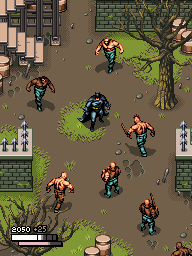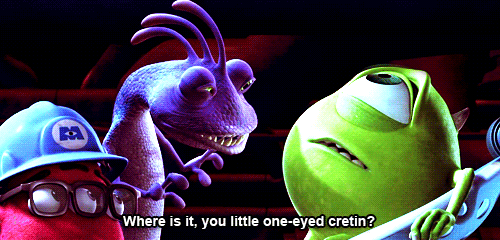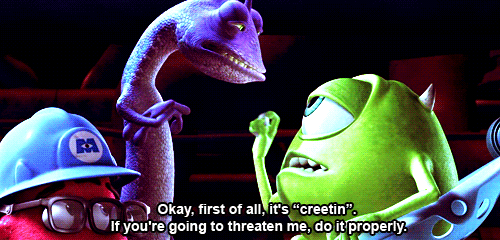Jojo's Bizarre Adventure Characters + Disguises









Jojo's Bizarre Adventure Characters + Disguises
More Posts from Oneinchpoke and Others

Texas anti-gay leader Jonathan Saenz’s ex-wife left him for another woman.

Well, it’s not as good as blowing it up but it’s something.






mood: killer queen smiling.

"Ugh… so full… can’t move…"
getting dinner after con

Headcanon that Samus Aran is NOT this skimpy, thin woman in a bodysuit.
Samus throws around giant creatures at least two times her size with ONE HAND like it’s NOTHING. She can jump continuously for like three miles both vertically and horizontally without any breaks, AND while being in an ab crunch position the entire time.
My point: Samus Aran is a fucking badass female protagonist so stop sexualizing her/conveying her as weak/submissive when she literally has an arm as a weapon of mass destruction. She’s gotta be super buff and has an 8 pack probably.












Body language cheat sheet for writers
As a writer, understanding and incorporating body language into your storytelling can greatly enhance your characters and their interactions. Here's a cheat sheet to help you describe body language effectively:
Facial Expressions:
* Raised eyebrows: Surprise, disbelief, or curiosity.
* Furrowed brow: Concentration, confusion, or frustration.
* Smiling: Happiness, amusement, or friendliness.
* Frowning: Disapproval, sadness, or concern.
* Lip biting: Nervousness, anticipation, or tension.
Eye Movements:
* Eye contact: Confidence, interest, or honesty.
* Avoiding eye contact: Shyness, guilt, or deception.
* Narrowed eyes: Suspicion, skepticism, or concentration.
* Wide eyes: Shock, fear, or surprise.
* Rolling eyes: Exasperation, annoyance, or disbelief.
Gestures:
* Crossing arms: Defensiveness, disagreement, or discomfort.
* Nervous fidgeting: Anxiety, restlessness, or impatience.
* Pointing: Assertiveness, emphasis, or accusation.
* Open palms: Honesty, openness, or sincerity.
* Hand on chin: Deep thought, contemplation, or evaluation.
Posture and Movement:
* Slumped shoulders: Defeat, sadness, or fatigue.
* Upright posture: Confidence, attentiveness, or authority.
* Pacing: Restlessness, agitation, or contemplation.
* Tapping foot: Impatience, annoyance, or frustration.
* Leaning in: Interest, engagement, or curiosity.
Touch:
* Hugging: Affection, comfort, or warmth.
* Handshake: Greeting, introduction, or agreement.
* Patting on the back: Encouragement, praise, or camaraderie.
* Clenched fists: Anger, determination, or frustration.
* Brushing hair behind the ear: Nervousness, coyness, or flirtation.
Mirroring:
* When two characters unconsciously mimic each other's body language, it indicates rapport, connection, or empathy.
Nodding:
* A subtle nod can convey agreement, understanding, or encouragement.
Crossed legs:
* Crossed legs can indicate relaxation or a casual, nonchalant attitude.
Tapping fingers:
* Impatience, anticipation, or nervousness can be expressed through rhythmic finger tapping.
Hand on the chest:
* Placing a hand on the chest can convey sincerity, empathy, or a heartfelt emotion.
- Tilting the head:
* Tilting the head to the side can suggest curiosity, attentiveness, or interest.
Rubbing the temples:
* Rubbing the temples can indicate stress, fatigue, or a headache.
Chin stroking:
* Stroking the chin while in thought can portray contemplation, decision-making, or intellectual curiosity.
Arms crossed behind the back:
* This posture can indicate authority, confidence, or a composed demeanor.
Tilted body posture:
* Leaning slightly towards someone can suggest interest, attraction, or engagement in a conversation.
Biting nails:
* Nail-biting can reveal anxiety, nervousness, or tension.
Foot tapping:
* Rapid or impatient foot tapping can show agitation, restlessness, or eagerness.
Squinting:
* Squinting the eyes can signal suspicion, doubt, or an attempt to focus on something.
Shifting weight from foot to foot:
* Shifting weight can imply discomfort, unease, or anticipation.
Covering the mouth while speaking:
* This gesture can indicate hesitation, embarrassment, or the desire to hide something.
Remember that body language can vary across different cultures and individuals, so consider your character's background and personality while describing their movements. Additionally, body language is best used in combination with dialogue and internal thoughts to create a more nuanced portrayal of your characters.
Happy writing!


-
 kimiokana reblogged this · 4 years ago
kimiokana reblogged this · 4 years ago -
 kimiokana liked this · 4 years ago
kimiokana liked this · 4 years ago -
 cacti4miles liked this · 4 years ago
cacti4miles liked this · 4 years ago -
 jongbumbum liked this · 4 years ago
jongbumbum liked this · 4 years ago -
 niikomizu liked this · 4 years ago
niikomizu liked this · 4 years ago -
 arrobata liked this · 4 years ago
arrobata liked this · 4 years ago -
 salem-doe liked this · 4 years ago
salem-doe liked this · 4 years ago -
 requedup liked this · 4 years ago
requedup liked this · 4 years ago -
 parkingdumpy liked this · 4 years ago
parkingdumpy liked this · 4 years ago -
 thebleckpen liked this · 4 years ago
thebleckpen liked this · 4 years ago -
 echiosbrain liked this · 4 years ago
echiosbrain liked this · 4 years ago -
 empress-elisadress liked this · 4 years ago
empress-elisadress liked this · 4 years ago -
 devils-brat liked this · 4 years ago
devils-brat liked this · 4 years ago -
 gulusgammapussy liked this · 5 years ago
gulusgammapussy liked this · 5 years ago -
 legal-party liked this · 5 years ago
legal-party liked this · 5 years ago -
 cryptidbarbie-archive liked this · 5 years ago
cryptidbarbie-archive liked this · 5 years ago -
 chickenwizards liked this · 5 years ago
chickenwizards liked this · 5 years ago -
 junjiito liked this · 5 years ago
junjiito liked this · 5 years ago -
 annoyedfox liked this · 5 years ago
annoyedfox liked this · 5 years ago -
 luckyunknowntragedy liked this · 5 years ago
luckyunknowntragedy liked this · 5 years ago -
 grilled777cheese liked this · 5 years ago
grilled777cheese liked this · 5 years ago -
 durendall liked this · 5 years ago
durendall liked this · 5 years ago -
 srasrarapousa liked this · 5 years ago
srasrarapousa liked this · 5 years ago -
 starburdened-blog liked this · 5 years ago
starburdened-blog liked this · 5 years ago -
 skelekitty42 liked this · 5 years ago
skelekitty42 liked this · 5 years ago -
 mutateneptune liked this · 5 years ago
mutateneptune liked this · 5 years ago -
 equas1an liked this · 5 years ago
equas1an liked this · 5 years ago -
 lizardway liked this · 5 years ago
lizardway liked this · 5 years ago -
 demynom reblogged this · 5 years ago
demynom reblogged this · 5 years ago -
 doomeow reblogged this · 5 years ago
doomeow reblogged this · 5 years ago -
 momothegamer liked this · 6 years ago
momothegamer liked this · 6 years ago -
 vanderwife liked this · 6 years ago
vanderwife liked this · 6 years ago -
 crystallineshores liked this · 6 years ago
crystallineshores liked this · 6 years ago -
 acautiouscat liked this · 6 years ago
acautiouscat liked this · 6 years ago -
 lexi-ebubbles liked this · 6 years ago
lexi-ebubbles liked this · 6 years ago -
 jojosker liked this · 6 years ago
jojosker liked this · 6 years ago -
 ebbies liked this · 6 years ago
ebbies liked this · 6 years ago -
 bbuwithlmfaoandpmore liked this · 6 years ago
bbuwithlmfaoandpmore liked this · 6 years ago -
 kulocchi liked this · 6 years ago
kulocchi liked this · 6 years ago -
 rockinmusicquarterly liked this · 6 years ago
rockinmusicquarterly liked this · 6 years ago -
 pinkeyedrops-blog liked this · 6 years ago
pinkeyedrops-blog liked this · 6 years ago -
 thats-why-okay reblogged this · 6 years ago
thats-why-okay reblogged this · 6 years ago